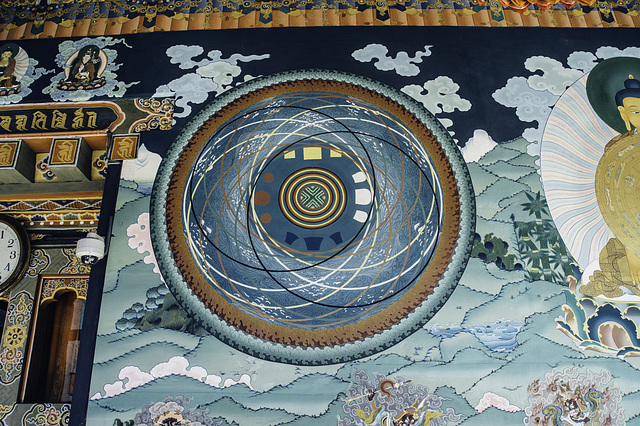Thimphu
Thimphu
Thimphu
Thimphu
Thimphu
Thimphu
Thimphu
Thimphu
Thimphu
Himalayas from above
Himalayas from above
I am the king of the cloooouds
Night circle of prayers
Horse, horsicek
In a kingdom of trees
Ice ice wata
Jomolhari (7,326 m)
Y@que
Father and sun and the holy pricks
Do not kick against the pricks
Long valleys (without vallets)
Kanchenjunga's sister
From Jomo
Thimphu
Thimphu
Thimphu
Thimphu
Thimphu
Thimphu
Thimphu
Thimphu
Buddha Dordenma statue, Thimphu, Bhutan
Thimphu
Thimphu
Thimphu
Thimphu
DSC 1810
DSC 1805
DSC 1797
DSC 1795
DSC 1790
DSC 1789
DSC 1782
DSC 1777
DSC 1775
Location
Keywords
Orbital Confusion


Paintings of this kind are often described as representing the "gola". This is a Sanskrit word that is usually not translated into Tibetan in texts on astronomy. It basically means circle, and in his short text on gola, Buton Rinchen Drup describes three types of such circle. The first he calls the normal "circle of the world", which is the upper surface of the disks of earth and water that are considered to constitute our world. The surface of the disk of earth beyond the Sīta mountains holds the main twelve continents and the oceans that separate them. Beyond lies the great salt ocean that rises up from the lower disk of water. It is these two areas together that Buton refers to as the "circle of the world".
The other two circles are essentially the same: the "circle of the (zodiac) signs" and the "circle of the lunar mansions". These refer to the apparent orbit of the Sun, which would be called the ecliptic in modern terms. It is considered in the Kālacakra system that the Sun and the stars of the zodiacal signs and lunar mansions rotate around the central Mt. Meru once every day, bringing the change of day and night to the various continents, and that throughout the year, the Sun moves through the zodiac signs, and a change in orbital disposition brings about the changing of the seasons.
Both of these two main types of gola are depicted in pictures of this kind. The basic gola are described very briefly in the Kālacakra Tantra and its commentary the Vimalaprabhā. Like many such descriptions in this literature, they are so brief as to be open to multiple interpretation, and there are approximately half a dozen different systems described in the Tibetan literature. The most common of these is known as the "Twisted ball of string" .
Credits: www.kalacakra.org/phyinang/golconf.htm
The other two circles are essentially the same: the "circle of the (zodiac) signs" and the "circle of the lunar mansions". These refer to the apparent orbit of the Sun, which would be called the ecliptic in modern terms. It is considered in the Kālacakra system that the Sun and the stars of the zodiacal signs and lunar mansions rotate around the central Mt. Meru once every day, bringing the change of day and night to the various continents, and that throughout the year, the Sun moves through the zodiac signs, and a change in orbital disposition brings about the changing of the seasons.
Both of these two main types of gola are depicted in pictures of this kind. The basic gola are described very briefly in the Kālacakra Tantra and its commentary the Vimalaprabhā. Like many such descriptions in this literature, they are so brief as to be open to multiple interpretation, and there are approximately half a dozen different systems described in the Tibetan literature. The most common of these is known as the "Twisted ball of string" .
Credits: www.kalacakra.org/phyinang/golconf.htm
- Keyboard shortcuts:
Jump to top
RSS feed- Latest comments - Subscribe to the comment feeds of this photo
- ipernity © 2007-2024
- Help & Contact
|
Club news
|
About ipernity
|
History |
ipernity Club & Prices |
Guide of good conduct
Donate | Group guidelines | Privacy policy | Terms of use | Statutes | In memoria -
Facebook
Twitter

Sign-in to write a comment.